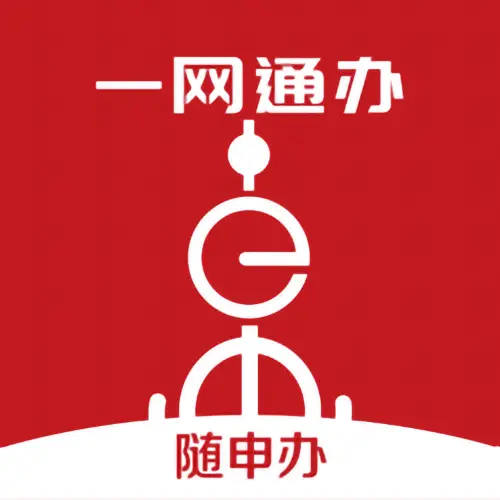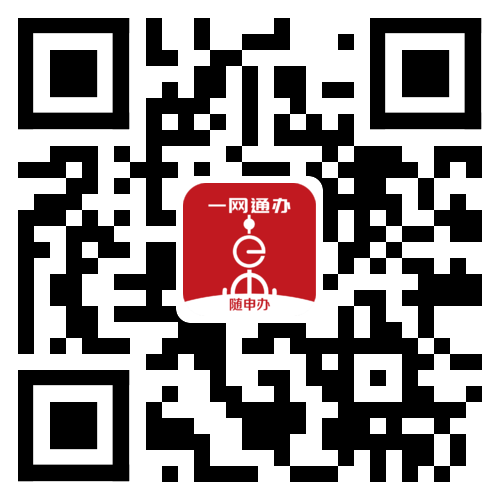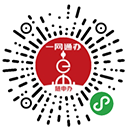1. 哪些情况下可以提起对知识产权侵权的行政投诉?提起行政投诉的主体有哪些?
以下行为可以提起对知识产权侵权的行政投诉:
(1)专利可投诉侵权行为:
A. 任何单位或者个人未经发明和实用新型专利权人许可,实施其专利,即为生产经营目的制造、使用、许诺销售、销售、进口其专利产品,或者使用其专利方法以及使用、许诺销售、销售、进口依照该专利方法直接获得的产品。
B. 任何单位或者个人未经外观设计专利权人许可,实施其专利,为生产经营目的制造、许诺销售、销售、进口其外观设计专利产品。
C. 假冒专利行为。
(2)商标可投诉侵权行为:
A. 未经商标注册人的许可,在同一种商品上使用与其注册商标相同的商标的;
B. 未经商标注册人的许可,在同一种商品上使用与其注册商标近似的商标,或者在类似商品上使用与其注册商标相同或者近似的商标,容易导致混淆的;
C. 销售侵犯注册商标专用权的商品的;
D. 伪造、擅自制造他人注册商标标识或者销售伪造、擅自制造的注册商标标识的;
E. 未经商标注册人同意,更换其注册商标并将该更换商标的商品又投入市场的;
F. 故意为侵犯他人商标专用权行为提供便利条件,帮助他人实施侵犯商标专用权行为的;
G. 给他人的注册商标专用权造成其他损害的。
(3)著作权可投诉侵权行为:
A. 未经著作权人许可,复制、发行、表演、放映、广播、汇编、通过信息网络向公众传播其作品的,著作权法另有规定的除外;
B. 出版他人享有专有出版权的图书的;
C. 未经表演者许可,复制、发行录有其表演的录音录像制品,或者通过信息网络向公众传播其表演的,著作权法另有规定的除外;
D. 未经录音录像制作者许可,复制、发行、通过信息网络向公众传播其制作的录音录像制品的,著作权法另有规定的除外;
E. 未经许可,播放或者复制广播、电视的,著作权法另有规定的除外;
F. 未经著作权人或者与著作权有关的权利人许可,故意避开或者破坏权利人为其作品、录音录像制品等采取的保护著作权或者与著作权有关的权利的技术措施的,法律、行政法规另有规定的除外;
G. 未经著作权人或者与著作权有关的权利人许可,故意删除或者改变作品、录音录像制品等的权利管理电子信息的,法律、行政法规另有规定的除外;
H. 制作、出售假冒他人署名的作品的。
提起行政投诉的主体包括:
(1) 专利权人或者利害关系人;
(2) 商标注册人或者利害关系人;
(3) 著作权人或者利害关系人。
2. 权利人在提起行政投诉后,是否还可以就知识产权侵权向法院提起民事侵权诉讼?
知识产权行政保护具有非终局性,对于经过行政保护认定的侵权或不侵权的结果,如果当事人不认可又不提起行政诉讼,可以向法院提起民事侵权诉讼。法院对行政保护程序中所认定的结果并不当然认可,而是需要重新对案件事实进行全面审查。如果提起民事侵权诉讼时,行政投诉还没有裁决,行政投诉案件会终止审理。
3. 当接到行政投诉后,行政主管部门的一般处理流程?
行政投诉申请符合行政投诉规定条件的,行政主管部门应当在收到请求书之后立案并通知请求人,同时指定执法人员处理该行政投诉;行政投诉请求不符合行政投诉规定条件的,行政主管部门应当在收到投诉请求后通知请求人不予受理,并说明理由。
行政主管部门应当在立案后将请求书及其附件的副本送达被请求人,要求其在收到之日起指定日期内提交答辩书并按照请求人的数量提供答辩书副本。被请求人逾期不提交答辩书的,不影响行政主管部门进行处理。
行政主管部门处理行政投诉案件时,可以根据当事人的意愿进行调解。双方当事人达成一致的,由行政主管部门制作调解协议书,加盖其公章,并由双方当事人签名或者盖章。调解不成的,应当及时作出处理决定。
4. 如果行政主管部门认定投诉成立,行政主管部门可以对侵权人采取哪些措施?
认定侵权行为成立的,责令立即停止侵权行为,根据法律法规规定对侵权人可以采取没收、销毁侵权商品和主要用于制造侵权商品工具,处以一定金额罚款,没有违法所得等。
5. 行政投诉阶段,知识产权权利人可以要求侵权人赔偿吗?
(1)专利方面,在行政投诉阶段,认定侵权行为成立之后,权利人可以单独请求调解侵犯专利权赔偿数额。依据《专利法》第六十条、《专利行政执法办法》第二十二条,对赔偿数额进行处理的管理专利工作的部门应当事人的请求,可以就侵犯专利权的赔偿数额进行调解。
如果调解不成的,当事人为获得赔偿,需要向人民法院起诉。
(2)著作权方面,可以请求版权行政机关(如版权局、文化执法总队)进行行政调解,也可以向人民法院起诉。
(3)商标方面,《商标法》第六十条规定对侵犯商标专用权的赔偿数额的争议,当事人可以请求进行处理的工商行政管理部门调解,也可以向人民法院起诉。
6. 如果知识产权权利人对行政投诉结果不服,可以采取哪些救济途径?
(1)专利:当事人对处理结果不服时,可以自收到处理通知之日起十五日内起诉至法院。依据《专利法》第六十条,管理专利工作的部门处理时,认定侵权行为成立的,可以责令侵权人立即停止侵权行为,当事人不服的,可以向人民法院起诉。
行政行为通常还有行政复议的救济措施,但需注意,依据《专利行政保护复议与应诉指引》,以下情形可以向人民法院提起民事诉讼,但不能申请行政复议:
当事人对管理专利工作的部门作出的侵权纠纷处理决定不服的;
当事人对管理专利工作的部门作出的调解不服的;
由各知识产权保护中心、知识产权快速维权中心等单位协助办理的电商、展会领域专利案件,以调解形式结案的。
(2)著作权:《著作权行政投诉指南》第七条规定投诉人如果对著作权行政管理部门的处理决定不服,可以依法申请行政复议或者提起行政诉讼。
(3)商标:《商标法》第六十条,经工商行政管理部门调解,当事人未达成协议或者调解书生效后不履行的,当事人可以向人民法院起诉。
7. 什么是知识产权海关保护?
知识产权海关保护,是指海关根据国家法律法规的规定,对与进出口货物有关并受中华人民共和国法律、行政法规保护的商标专用权、著作权和与著作权有关的权利、专利权、世界博览会标志、奥林匹克标志实施的保护。需要特别注意的是,集成电路布图设计、商业秘密、商号名称、植物新品种、地理标志等不在海关保护范围之内。
知识产权海关保护又分为,依职权主动查缉的主动保护,以及依权利人申请采取保护措施的被动保护。其中主动保护是最常见的保护措施:当权利人备案后,海关发现侵权嫌疑货物将主动通知权利人,如权利人认为该货物侵犯其在海关总署备案的知识产权,申请扣留并提供担保的,海关则扣留货物,同时让权利人以及收发货人提交证据材料并展开调查,根据调查结果做出相应的措施。由此可见,海关采取主动保护并扣留涉嫌侵权货物必须具备两个前提:1、涉嫌被侵权的知识产权已在海关进行了备案;2、权利人向海关提出保护申请和担保。而权利人在海关备案,是保护自身知识产权非常重要的环节。
当然,未经许可,擅自使用他人未在海关总署备案的受中国法律和行政法规保护的知识产权, 仍然属于侵权行为,应当承担法律责任。
This part will be specifically divided as per the copyright, trademark,patent and business secrets. In each section, common problems suffered by theexhibitors / intellectual property right holders will be listed, and specificresolution measures and flows will be illustrated aimed at the specificproblem.
This part may also be divided in chronological order, including thefollowing sections.
1. What should an enterprise prepare for before participating in anexhibition? 1
An exhibition is a windowfor display and exchanges of new technologies, new knowledge, new products andnew designs, during which a large number of spiritual results will generate andget involved, most of which are the targets under protection by theintellectual property law. Therefore, an enterprise shall well perform thefollowing work before participating in the exhibition.
(1) Fully understand the intellectual property law system of the nation whereis exhibition is hosted.
(2) Intensifyself-inspection to ensure that the exhibited products have no infringement uponthe patent rights of others.
The means of self-inspectioninclude:
With patent retrieval, giventhe same or similar technical subject, retrieve to confirm whether falling intothe scope of protection for the patent right of others;
Inspect by oneself to seewhether getting the usage license of the relevant patent right holder alreadyand whether the right transfer is subject to legal compliance;
Inspect by oneself to seewhether the invention, innovation and research involved with the exhibitedproducts stand on the current technology / technical data of the currentdesign, and generally will not infringe upon the patent right of others, ifunderpinned by the technology in the public domain.
(3) Intensifyself-examination to avoid the exhibited products infringing upon the businesssecrets of others.
Examine by oneself to seewhether there are business secrets with obligations of non-disclosure, andavoid disclosure and usage thereof, if any;
Check whether the originalwork unit of the staff bears the competitive relationship with the current unit,ensuring that employment of such staff has gone through the period ofcompetitive restriction and has the termination certificate issued by theoriginal work unit and other relevant certification documents;
In addition, the enterprisemay also prepare for the materials of certification with legal sources for theexhibited products, such as record of independent research and development,technical data in the public area, record of reverse engineering andcertification of getting the business secrets in proper ways.
(4) Pay attentionto checking the risk of infringement upon the copyright.
The enterprise mayconduct self-check from the following perspectives: status of the rights offine art works, photography works, scripts, fonts, music, audio-visual materials,computer software and other materials used on the exhibition, to ensure whetherthe enterprise itself is the right holder or gets the usage license from theright holder of the works.
Meanwhile, the enterpriseshall also well prepare for the corresponding certification documents. In theevent of any works with the risk of infringement, it shall timely replace orcontact the right holder, eliminating the defects of right on the usage ofworks through communication and negotiation.
(5) Pay attentionto checking the risk of infringement upon the trademark.
As for the trademarkwhich has not been registered yet, check whether there are same or similartrademarks through the trademark retrieval;
As for the trademarkalready getting the trademark right, clearly definite the effective status ofthe rights, the commodity service category of the trademark registration withthe trademark right and the usage within the prescribed scope.
(6) Considerwhether the exhibited products need to apply for a patent in the country wherethe exhibition is hosted, in order to reinforce protection.
The enterprise needs to applyfor the patent involved with the exhibited product in the hope of getting thelegal protection, if any, and needs to apply for the patent in the countrywhere the exhibition is hosted, due to the territoriality of the patent right.
If it is too late to apply fora patent due to time factors, according to Article 24 of the Patent Law of thePeople’s Republic of China, if it is exhibited for the first time at an internationalexhibition sponsored or recognized by the Chinese government, an invention forwhich an application is filed for a patent does not lose its novelty within sixmonths before the date of application, the patent may still be applied for.
(7) Lay emphasison the influences on the patent layout of the enterprise exerted by theproducts participating in the exhibition.
The products needing attentioninclude but not limited to the following items.
The product which noapplication for a patent has been filed. The enterprise needs to complete theapplication for a patent as soon as possible within the period when the productdoes not lose its novelty after exhibition;
The products with potentialcommercial value. Given the product influence expressed by the exhibition, theenterprise needs to formulate a strategy, emphasizing maintenance andapplication of the relevant patent rights of key markets and key targetedcountries.
The product applying thepatent with leading technology. After such products are available, theenterprise shall formulate a strategy to prevent competitors in a reasonablemanner, increasing input centering on the core patent and the basic patent, andapplying for a patent for the alternative proposal to its best effort, so as toconsolidate its own strength of competition.
(8) Lay emphasison considering whether the business secrets will be disclosed due to theproducts participating in the exhibition.
The enterprise shall payattention to avoiding the display of the products with core technologicalsecrets such as the design drawing of the product, the manufacturing techniqueof the product, imagination, mold and formula in the concept status andexperimental data obtained by devoting a lot of energy. Meanwhile, theenterprise shall also highlight stronger review of the publicity materials, aswell as trainings for the personnel at the exhibition stand, so as to avoiddisclosure of operation information, customer information and other informationon business management of the enterprise.
2. What relevant legal documents are suggested to bring when participating inan exhibition? 1
(1) Identity certification:
Business license of thecompany (with the official seal stamped thereon), qualification certificate ofthe legal representative (with the official seal stamped thereon), copies ofthe ID card of the legal representative; a natural person may bring thepersonal effective identity certificates, effective certificates forparticipating in the exhibition, etc.
(2) Legal and effective ownership certificates of intellectual propertyrights:
A. Patent related: Certificate of patent (a certificate of the state wherethe exhibition is located), texts of patent announcement, certification of thepatent legal status (annual fee payment receipt, copies of patent register andother documents reflecting the effective status of patent rights);
B. Trademark related: Trademark registration certificate (a certificate ofthe state where the exhibition is located), other registration certificationdocuments (confirmed with seal by the right holder), certification of thetrademark legal status;
C. Copyright related: Certificates of the copyright rights (worksregistration certificate, manuscript of works, certificate issued by thecertification authority);
D. Certification of other rights: Contract for licensed usage, information oflicensed usage filing, contract for rights transfer, certification documentsfor negotiations of the company and right holder (such as the E-mailcorrespondence, meeting summary confirmed by both sides), certificationdocuments of the rightful heir or agents of the rights, etc.
(3) Certification of legal sources: important procurement contracts,invoices, payment certificates and other proof of purchase of the company.
(4) List of emergency contact: personnel of the emergency team, lawyerand main contact persons of the licensor.
(5) In the cases where there is a finding of suspected infringementthrough prior investigation, suggest preparing for the basic information(industrial and commercial information and booth information) of the partysuspected of infringement upon the right, reasons and evidence of the suspectedinfringement in advance, and the document of comparison and analysis oninfringement shall be prepared in advance, if it is involved with the patent.
(6) Certification documents to cope with the complaint:
Certification of the firstusing right: prior sale or publicity of the product, evidence of the exhibitedproduct such as records of R&D, production and sales shall be prepared.
Materials applying thetechnology in the public area.
(7) If entrusting an agent to lodge a complaint, submit letter ofauthorization and identity certification of the entrusted agent.
(8) If a foreign natural person or legal person as the right holder,documents of identity certification shall be approved by China’s embassy inthat place. Chinese translation is required for the document in foreignlanguage.
(9) As for the copies of the abovementioned materials, certification onconsistency with the originals is required, or the originals may be wellprepared.



